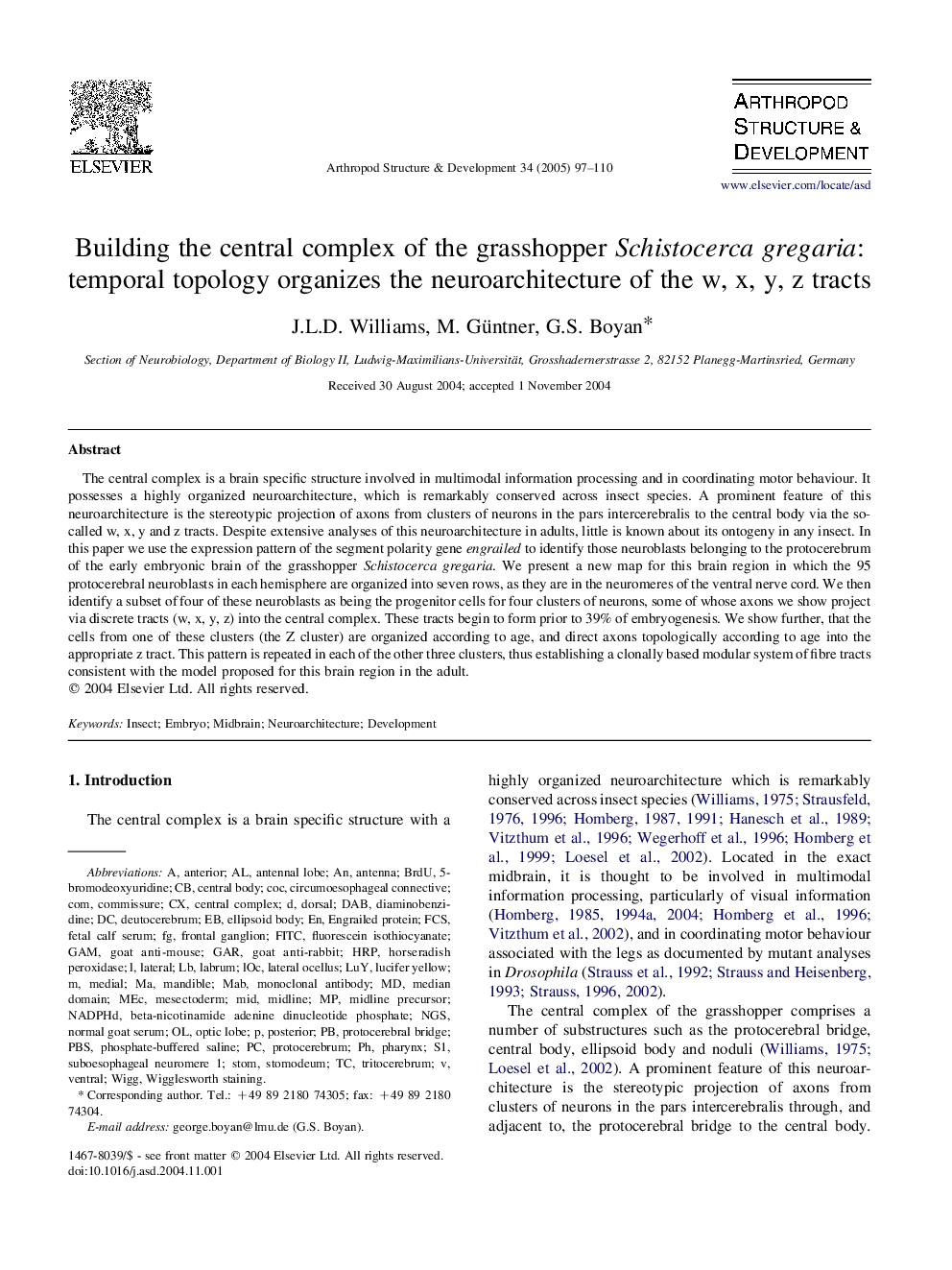| Article ID | Journal | Published Year | Pages | File Type |
|---|---|---|---|---|
| 9104161 | Arthropod Structure & Development | 2005 | 14 Pages |
Abstract
The central complex is a brain specific structure involved in multimodal information processing and in coordinating motor behaviour. It possesses a highly organized neuroarchitecture, which is remarkably conserved across insect species. A prominent feature of this neuroarchitecture is the stereotypic projection of axons from clusters of neurons in the pars intercerebralis to the central body via the so-called w, x, y and z tracts. Despite extensive analyses of this neuroarchitecture in adults, little is known about its ontogeny in any insect. In this paper we use the expression pattern of the segment polarity gene engrailed to identify those neuroblasts belonging to the protocerebrum of the early embryonic brain of the grasshopper Schistocerca gregaria. We present a new map for this brain region in which the 95 protocerebral neuroblasts in each hemisphere are organized into seven rows, as they are in the neuromeres of the ventral nerve cord. We then identify a subset of four of these neuroblasts as being the progenitor cells for four clusters of neurons, some of whose axons we show project via discrete tracts (w, x, y, z) into the central complex. These tracts begin to form prior to 39% of embryogenesis. We show further, that the cells from one of these clusters (the Z cluster) are organized according to age, and direct axons topologically according to age into the appropriate z tract. This pattern is repeated in each of the other three clusters, thus establishing a clonally based modular system of fibre tracts consistent with the model proposed for this brain region in the adult.
Keywords
NGSCentral bodyFCSTritocerebrumGARNeuroarchitecture5-bromodeoxyuridineLabrumGAMMesectodermHRPCOCMECMIDFITCmAbNADPHdCOMPBSDABdeutocerebrummedialantennaMonoclonal antibodyStomodeumellipsoid bodyBrdUgoat anti-rabbitlateralEmbryoInsectMidlinediaminobenzidineDevelopmentnormal goat serumfetal calf serumgoat anti-mousedorsal PosteriorPharynxfluorescein isothiocyanatemandibleanteriorAntennal lobeOptic lobelucifer yellowcentral complexLocPhosphate-buffered salineMidbrainventralHorseradish peroxidaseProtocerebrumCommissureFrontal ganglion
Related Topics
Life Sciences
Agricultural and Biological Sciences
Insect Science
Authors
J.L.D. Williams, M. Güntner, G.S. Boyan,
